#cefotaxime
Text

Cefotaxime
#cefotaxime#antibiotics#wikipedia#wikipedia pictures#medicine#medcore#medicalcore#medicore#medical#medical aesthetic#hospital aesthetic#hospitalcore#microbiology#medical microbiology#cefotaxima#ampoule#vial#syringe#needles#pharmacology#pharma#pharmcore#pharmacore#pharmacologycore#pharmacycore#lidocaine
11 notes
·
View notes
Text
Cefotaxime Drug
Medical information for Cefotaxime on Pediatric Oncall including Mechanism, Indication, Contraindications, Dosing, Adverse Effect, Interaction, Renal Dose, Hepatic Dose.
#Cefotaxime#medication#medications#medicine#drug#drugs#drug information#medical information#drug index#drug center#pediatric dose#Antimicrobial - cephalosporins#cefotaxime mechanism
0 notes
Text
Pharmaceutical Manufacturer Company | Tazobactam, Meropenem Manufacturer

One of the best pharmaceutical manufacturing company in Delhi, India. Proving Sulbactam 500mg, Cefepime 1000 mg, Tazobactam 125 mg, Amoxicillin 1000 mg, Clavulanic Acid 200mg, Pantoprazole 40 mg, Rabeprazole 20 mg, cefotaxime 1000 mg, sulbactam 500mg, ceftriaxone Sodium 1000 mg, ceftriaxone Sodium 200 mg, sulbactam 125mg, ceftriaxone Sodium 1000 mg, sulbactam 500mg, ceftriaxone 1000mg, Tazobactam 125 mg, Cefoperazone Sodium 1000mg
#Piperacillin 4gm#Tazobactam 0.5gm#Meropenem 1000 mg#Imipenem 500mg#Cilastatin 500mgceftazidime 1000 mg#tazobactam 125 mg#ceftizoxime 1000mg#cefotaxime 1000 mg#sulbactam 500mg#ceftriaxone Sodium 1000 mg#ceftriaxone Sodium 200 mg#sulbactam 125mg#ceftriaxone 1000mg#Tazobactam 125 mg#Cefoperazone Sodium 1000mg#Sulbactam 500mg#Cefepime 1000 mg#Amoxicillin 1000 mg#Clavulanic Acid 200mg#Pantoprazole 40 mg#Rabeprazole 20 mg
0 notes
Text
BIO- CEFAXIME
ĐẶC TRỊ CÁC BỆNH NHIỄM TRÙNG, SƯNG PHÙ ĐẦU, BẠI HUYẾT, VIÊM PHỔI
THÀNH PHẦN: Trong lọ chứaCefotaxime sodiumCÔNG DỤNG: Trị sưng phù đầu, nhiễm trùng huyết, bại huyết, viêm phổi, tụ huyết trùng, viêm ruột tiêu chảy, viêm da, viêm khớp, đau móng, nhiễm trùng đường sinh dục và tiết niệu trên trâu, bò, dê, cừu, heo, chó, mèo, gà, vịt.LIỀU LƯỢNG VÀ CÁCH DÙNG:Heo lớn, trâu, bò: Lọ 1 g/ 40 – 60 kg trọng…

View On WordPress
#bò#bại huyết vịt#Cefotaxime sodium#chó#gia cầm#gia súc#heo#Kháng Sinh#Kháng Sinh Bio#lợn#mèo#nhiễm trùng hô hấp chó mèo#nhiễm trùng tiêu hóa#sưng phù đầu#thú cưng#trâu
0 notes
Text
Cefotaxime Sodium API Market

“According to this latest study, the growth in the Cefotaxime Sodium API market will change significantly from the previous year. Over the next six years, Cefotaxime Sodium API will register a CAGR in terms of revenue, and the global market size will reach USD in millions by 2028.”
Global Cefotaxime Sodium API Market Report 2022 comes with the extensive industry analysis of development components, patterns, flows and sizes. The report also calculates present and past market values to forecast potential market management through the forecast period between 2022-2028. The report may be the best of what is a geographic area which expands the competitive landscape and industry perspective of the market. An extensive analysis of this Cefotaxime Sodium API Market is completed to recognize the many applications of the qualities of merchandise and utilization. The report involves an explanation regarding the numerous facets linked to market involving data and market increase concerning technological advancements, production and the firm's revenue. Additionally, market risk factors inventions, market setting, economy restraints, and challenges on the market have been explored within the accounts.
#Cefotaxime Sodium API Market Size#Cefotaxime Sodium API Market Share#Cefotaxime Sodium API Market Growth#Cefotaxime Sodium API Market Trend#Cefotaxime Sodium API Market segment#Cefotaxime Sodium API Market Opportunity#Cefotaxime Sodium API Market Analysis 2022
0 notes
Text
0 notes
Text
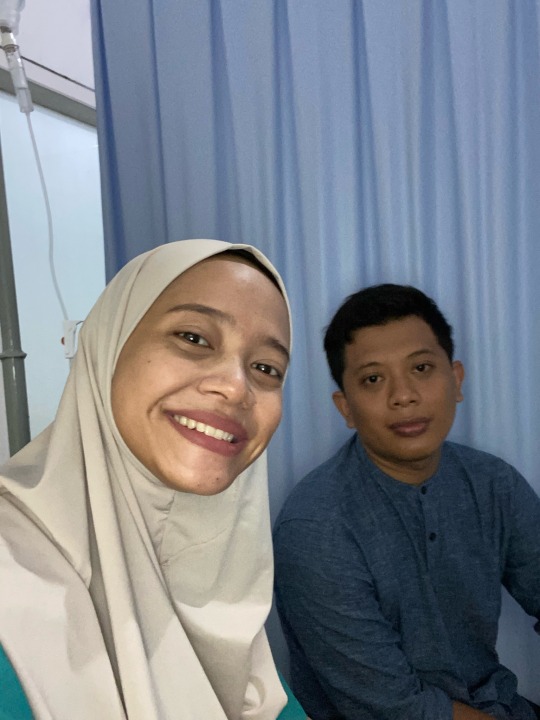
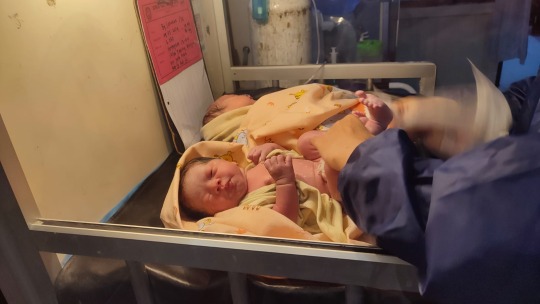

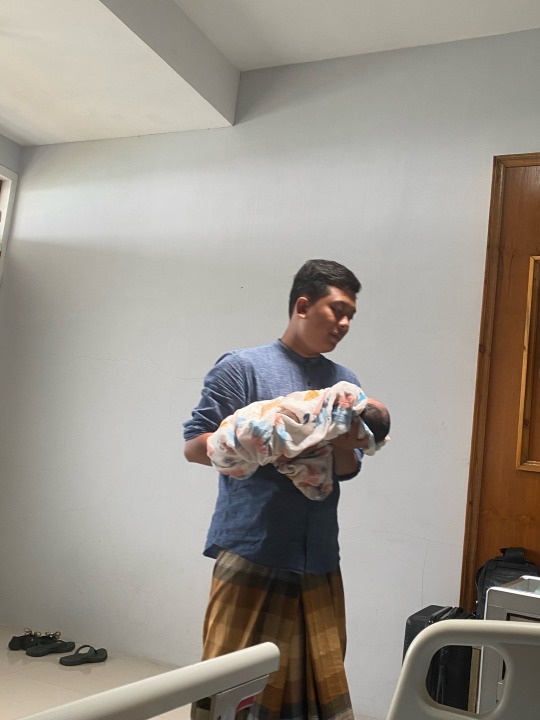





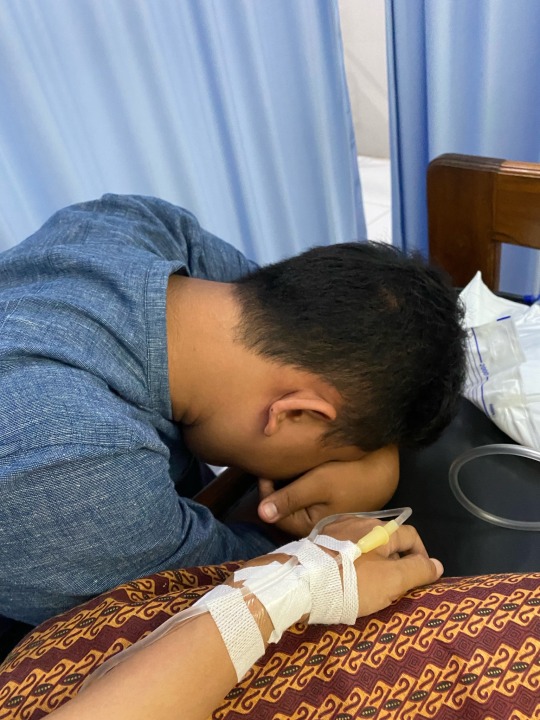
Cerita kelahiran Nala
Minggu malam, 3 maret 2024
Ibuk merasakan nyeri perut yg berulang dan tdk spt biasanya. Ibuk terbangun setengah 2 malam dan terjaga sampai pagi di temani kakak Usa.
Senin pagi, bapak dan ibuk kebingungan mencari dokter obgyn yg ada. Hampir semua dokter obgyn cuti hari ini dan baru praktek rabu sore. Dengan bantuan budhe, akhirnya kita memutuskan berangkat ke RSIA HST trenggalek. Dengan dokter hery spOG. Dokter obgyn senior di tempat kami. Syukur sekali beliau tidak turut serta dalam PIT di Malang seperti dokter obgyn yg lain
Pukul 15.00 kami berangkat dari rumah, suasana sore itu hujan gerimis. Ibuk sungguh berat meninggalkan kakak usa. Ibuk tahu, kami akan berpisah 3 hari, dan setelah kepulangan ibuk, usa sudah bukan anak tunggal kami lagi. Usa sudah menjadi kakak, dan semua tidaklah sama lagi.
Ibuk cium kakak usa 2x. Kita ngobrol sebentar, mencoba memberi pengertian bahwa ibuk harus melahirkan adek.
Pukul 16.00 kami sampai di RS. Melakukan pendaftaran, melengkapi administrasi, masuk di VK, dan ibuk menyiapkan diri untuk menjalani serangkaian persiapan yg paling ibuk takuti 😆. Pemasangan infus, catheter, skin test, dan pengambilan sampel darah.
Kami menunggu cukup lama sampai akhirnya semua dokter dan tim OK siap. Pukul set 8 malam, antibiotik profilaksis di berikan. Cefotaxime 1x2 gr. Ibuk tau waktu oprasi semakin dekat.
Pukul 8.15 ibuk dijemput petugas portir dan di antar ke ruang OK. Hanya ada uti dan bapak yg menemani. Mereka terlihat tidak begitu cemas, mengingat ini bukan yg pertama. Hanya perasaan ibuk sedikit berbeda. Malam itu ibuk memaksa Tuhan, bahwa semua proses persalinan ini harus lancar. Ibuk harus baik2 saja dan segera pulih karna ada kakak Usa yg menunggu ibuk di rumah. Ada kakak Usa yg berharap ibuk dan bapak segera pulang.
Pukul 8.20 ibuk masuk ruang OK. Turun dari kursi roda, naik di kursi oprasi. Ibuk duduk tegak sambil menunduk. Dokter anastesi bersiap melakukan regional anasthesi. Bisa ibuk bayangkan, panjangnya jarum spinocan menusuk tulang belakang ibuk. Sedikit nyeri, dan panas
Tak berselang lama, kaki ibuk mulai hangat, kesemutan, hingga lemas tdk berasa. Dokter memastikan anastesi siap dengan meminta ibuk batuk batuk beberapa kali. Entah kapan dimulai insisi, tidak lama setelah ibuk batuk batuk, dokter memberi arahan untuk mengambil nafas pendek2 dan tetap tenang. Goyangan kuat ibuk rasakan di area dada dan perut di barengi dengan sesak nafas luar biasa beberapa detik. Tak lama setelah itu, ibuk mendengar tangisan nala, Nala menjerit 2 kali, lalu dokter obgyn memberi aba aba “ibu, lihat sebelah kiri. Alhamdulillah bayinya sudah lahir, perempuan ya bu. Beratnya 2,550 gram.”
Ibuk menoleh kekiri, menatap Nala sekian detik, melihat anak mungil ibuk menelungkup di tangan dokter masih dengan diselimuti bnyak lemak. Alhamdulillah perempuan anak ibuk lahir, sehat dan cukup beratnya. Ibuk bahagia, lega, tahu bahwa proses persalinan ini sudah hampir selesai dan semua berjalan baik.
Pukul 21.07 ibuk keluar dari ruang operasi. Menunggu di ruang pemulihan. Pukul 22.00 ibuk sdh diantar d ruang perawatan di sambut dada dan uti. Semua lega, semua bahagia. Ibuk melihat Nala dari foto yg di ambil bapak saat melakukan adzan buat Nala
Nala comel, gembul dan mirip kakak Usa 😄
Alhamdulillah hari itu berjalan baik Nak. Kami bersyukur banyak2. Semua sudah terlewati dan tinggal menunggu pemulihan ibuk.
Semoga kamu tumbuh baik, sehat, dan berkembang sempurna.
Hasbuna Latifu Tasbiha (Pertolongan Tuhan yg lembut dan Suci).
Nama yg bapak berikan buat kamu.
Dan “Nala” adalah nama panggilan yg ibuk pilih.
Selamat menjadi anak kami, selamat menjadi adik kakak Usa,
0 notes
Text
Antibiotic Resistance in Multidrug-Resistant Bacteria: Bangladesh Study
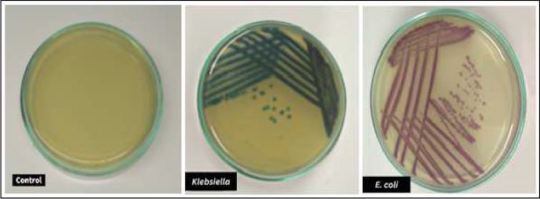
Abstract
Antibiotic-resistant bacterial strains are widespread in hospitals and intensive care units. This poses a serious threat to human health as the effectiveness of many antibiotics has been diminished by the emergence of resistant strains. The overuse of β-lactam antibiotics has led to the rise of antibiotic-resistant bacteria, including Extended-Spectrum β-Lactamase (ESBL) producing strains. However, ESBL screening is not commonly performed in Bangladesh, despite the growing prevalence of antibiotic resistance. Multidrug-resistant strains, particularly those carrying the Integron integrase 1 gene is responsible for antibiotic resistance. Horizontal integron transfer is one of the key factors that can contribute to the emergence of multidrug-resistant (MDR) bacteria. In this study, antibiotic sensitivity tests were conducted using 25 antibiotics. It was found that E. coli and Klebsiella both showed resistance to Aztreonam, Ampicillin/Sulbactam, Amoxyclav, Cefepime, Cefepime/Tazobactam, Ampicillin and Cefotaxime antibiotics. Our findings suggest that integron is common among MDR isolates and that they can be used to identify MDR isolates. As a result of the possibility of a widespread outbreak of MDR isolates, molecular surveillance and integron sequencing in other parts of the country is advised. The purpose of this study is innovation to create new antibiotics and alternative treatments to address antibiotic-resistant bacteria.

Introduction
Antimicrobial resistance poses a growing threat to human health and medical treatments and rising multidrug-resistant nosocomial infections in hospitals. Prompt treatment is crucial for vulnerable individuals at risk of bacterial infections. Viral infections are more likely to be the source of localized redness, swelling, and discomfort (Murray et al., 1998).
Antimicrobial resistance in bacteria is a complicated process involving a variety of different mechanisms. Susceptible bacteria can develop resistance through mutations or the transfer of resistance genes found on mobile DNA elements like integron (Barlow et al. 2004, Normak & Normak 2002). This, integron play a crucial role in the spread of antibiotic resistance, especially in Gram-negative bacteria by attaching to mobile genetic elements like transposons and conjugative plasmids, resistance integron transmit antibiotic resistance. (Mazel, 2006). Integron share antibiotic resistance gene cassettes predominantly through convergent evolution. Mobile integron has had a considerable impact on the spread of antibiotic resistance, particularly in Gram-negative bacteria (Davies et al., 2010). From the pool of these environmental genetic elements that is available, Integron has amassed a wide variety of resistance genes. Furthermore, their prevalence has significantly increased, increasing the possibility of interactions with other DNA and the emergence of additional, more complex mobile elements that are resistant to different antibiotic classes, disinfectants, and heavy metals (Gillings & Stokes 2012).
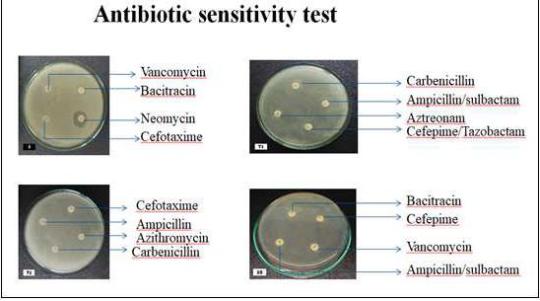
Class 1 integron are major contributors to antibiotic resistance in Gram-negative bacteria like Klebsiella and E. coli. They evolve due to exposure to selection agents in human-populated areas and natural environments, acquiring advantageous genes. The presence of resistance gene cassettes within class 1 integron is linked to antibiotic resistance. Addressing this problem requires essential research and intervention to combat the spread of antibioticresistant microorganisms. Ongoing development and dissemination of antibiotic resistance in Gramnegative bacteria like Klebsiella and E. coli class 1 integron play a crucial role. Their evolution is fueled by persistent exposure to selection agents in both human-populated areas and natural environments, leading to the acquisition of beneficial genes. The presence of resistance gene cassettes within class 1 integron is closely associated with antibiotic resistance. To effectively combat antibiotic-resistant microorganisms, it is essential to prioritize continuous research and innovation. Class 1 integrons are commonly found in various Gram-negative bacteria such as Acinetobacter, Vibrio, Aeromonas, Proteus, Burkholderia, Alcaligenes, Campylobacter, Enterobacter, Citrobacter, Klebsiella, Mycobacterium, Pseudomonas, Serratia, Salmonella, Shigella, and Escherichia coli (Yu G, Li Y and Liu X. 2013). Several studies have investigated prevalence of integron in MDR Escherichia coli and Klebsiella isolates around the world. These studies have identified a significant link between the presence of integrons and antibiotic resistance.
The study of integron aims to effectively combat antibiotic resistance by developing precise drugs that can be tailored to individual patients at a low cost, resulting in faster recovery times. With the emergence of antibiotic-resistant bacteria posing a significant threat to public health, there is a growing global interest in exploring integron profiles for the design of novel drugs that can safeguard both human and economically valuable animal populations. By understanding the intricate mechanisms of integron, scientists are hopeful of discovering innovative drugs that can tackle antibiotic resistance, thereby protecting human health and ensuring the well-being of economically important animals. This renewed focus on integron holds the potential to revolutionize the field of medicine and pave the way for personalized and cost-effective antibiotic treatments.
Source : Antibiotic Resistance and Integron Prevalence among Multidrug-Resistant Bacterial in Bangladesh. Molecular Pathology Laboratory, Institute of Biological Sciences, University of Rajshahi, Rajshahi-6205, Bangladesh
1 note
·
View note
Text

Injection Manufacturers Company | Pharmaceutical Company
As one of the top pharmaceutical manufacturers in India, our company takes great pride in producing high-quality medications that meet the needs of our customers.
We specialize in a wide range of antibiotics, including Piperacillin,, Meropenem, Imipenem, Cilastatin, Ceftazidime,, Ceftizoxime, Cefotaxime, Sulbactum, Ceftriaxone Sodium, Ceftrixone Sodium, Sulbactum, Ceftrixone Sodium, Sulbactum, Ceftriaxone,, Cefoperazone Sodium, Sulbactum, Cefepime, Tazobactum, Clavulanic Acid, Pentaprazole, and Rabeprazole.
Our dedication to delivering safe and effective medications has earned us a reputation as a trusted source for pharmaceuticals in the region. We are committed to maintaining the highest standards of quality in our production processes and invest in the latest technology and research to stay ahead of the curve.
At our company, we believe that quality medications should be accessible and affordable to all, and we work tirelessly to make that a reality for our customers.
#Piperacillin 4gm#Tazobactum 0.5gm#Meropenem 1000mg#Imipenem 500mg#Cilastatin 500mg#ceftazidime1000mg#tazobactum 125mg#ceftizoxime 1000mg#cefotaxime 1000 mg#sulbactum 500mg#ceftriaxone Sodium 1000mg#ceftrixone Sodium 200mg#sulbactum 125mg#ceftrixone Sodium 1000mg#ceftriaxone 1000mg#Tazobactum 125mg#Cefoperazone Sodium 1000mg#Sulbactum 500mg#Cefepime 1000mg#Amoxycillin 1000mg#Clavulanic Acid 200mg#Pentaprazole 40mg#Rabeprazole 20 mg
0 notes
Text
CAP
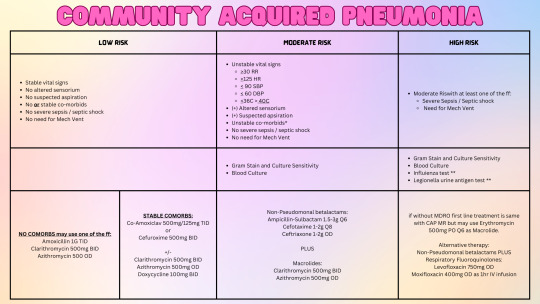
According to the Philippine Clinical Practice Guidelines for CAP in ADULTS (2020):
Unstable Co Morbids include:
-> Uncontrolled DM
-> Active malignancies
-> Neurologic disease in evolution
-> CHF FC II-IV
-> Unstable CAD
-> Renal Failure on dialysis
-> Uncompensated COPD
-> Decompensated Liver disease
Legionella urine antigen test and Influenza test are conditional recommendation for CAP HR:
-> Influenza test may be done during periods of high influenza activity (July - January) if CAP HR is preceded by inluenza-like illness symptoms such as body malaise, rhinorrhea, arthralgia, sorethroat plus risk factors such as >60y/o, pregnant, asthmatic.
DRUGS:
PENICILLINS: amoxicillin
MACROLIDES: clarithromycin, azithromycin
BETALACTAMS: co-amoxiclav, cefuroxime
TETRACYCLINES: doxycycline
NON PSEUDOMONAL BETALACTAMS: ampisul, cefotaxime, ceftriaxone
FLUOROQUINOLONES: levofloxacin, moxifloxacin
Atypical coverage for Aspiration Pneumonia is only recommended if with suspicion of lung abscess or empyema.
Antiviral treatment is recommended with antibiotic therapy in CAP HR with risk factors mentioned under influenza testing.
Treatment should be initiated within 4 hours regardless of risk.
Duration of treatment:
-> CAP LR , CAP MR: 5 days if stable
-> May extend duration if pneumonia is not resolving, complicated by sepsis, infected with less common pathogens or infected with drug-resistant pathogens.
CXR post-treatment is recommended after a minimum of 6-08 weeks to establish a baseline and exclude other conditions but it is not recommended for routine testing in stable improving patients.
Inadequate Response after 72 hours of Empiric treatment:
-> Reassess for possible resistance
-> Reassess for the presence of other pathogens such as M. tuberculosis, viruses, parasites, or fungi.
Philippine CPG for CAP (Adults) 2020 Downloadable Link:
https://www.psmid.org/cpg-management-and-prevention-of-adult-community-acquired-pneumonia-2020/
#CAP#Community Acquired Pneumonia#Philippine Clinical Practice Guidelines Summary#Medical notes#Philippine CPG#Review#Medicine#Doctors#Pneumonia#Med School#Medblr#Studyblr
0 notes
Text
0 notes
Text
common list of antibiotics

Antibiotics are powerful medications that are used to treat infections caused by bacteria. They work by either killing the bacteria or stopping them from multiplying. There are many different types of antibiotics, each with its strengths and weaknesses. Some of the most popular categories of antibiotics currently in use will be covered in this article.
Penicillins
Penicillins are some of the most commonly prescribed antibiotics. They work by preventing bacteria from forming a cell wall, which makes it difficult for them to reproduce and ultimately results in their death. The most common types of penicillins are amoxicillin and ampicillin, which are both used to treat various infections, such as respiratory and urinary tract infections.
Macrolides
Macrolides are another commonly prescribed class of antibiotics. They work by preventing bacteria from making new proteins, effectively stopping them from multiplying. The most frequently prescribed macrolide is azithromycin,
frequently used to treat respiratory infections like pneumonia and bronchitis. Macrolides are also used to treat sexually transmitted diseases, such as chlamydia.
Cephalosporins
Cephalosporins are a class of antibiotics that are structurally similar to penicillins. They work similarly by disrupting the cell wall of the bacteria. Cephalosporins are used to treat various infections, including skin and urinary tract infections. Some common examples of cephalosporins include ceftriaxone and cefotaxime.
Tetracyclines
Tetracyclines are a group of antibiotics that were first discovered in the 1940s. They work by blocking the bacteria from making proteins, which stops their growth and reproduction. Tetracyclines treat many infections, including respiratory infections, acne, and sexually transmitted diseases. Some common examples of tetracyclines include doxycycline and tetracycline.
Aminoglycosides
Aminoglycosides are a class of antibiotics that are primarily used to treat severe infections caused by gram-negative bacteria. They work by interfering with the bacteria's ability to make proteins, ultimately leading to their death. Aminoglycosides are typically administered intravenously and are used to treat infections such as sepsis and endocarditis. Some common examples of aminoglycosides include gentamicin and tobramycin.
Fluoroquinolones
An antibiotic class known as fluoroquinolones prevents bacteria from synthesizing DNA. They are often used to treat bacterial infections of the respiratory system, urinary tract, and gastrointestinal tract. They also treat skin, bone, and sexually transmitted diseases. Ciprofloxacin and levofloxacin are typical examples of fluoroquinolones.
Sulfonamides
Sulfonamides, also known as sulfa drugs, are a group of antibiotics that work by interfering with the production of folic acid in bacteria. Without folic acid, the bacteria cannot produce DNA, ultimately leading to their death. Sulfonamides are used to treat a variety of infections, such as middle ear infections, upper respiratory tract infections, and urinary tract infections. One typical example of a sulfonamide is sulfamethoxazole.
Carbapenems
Carbapenems are a class of antibiotics commonly used in hospitals to treat serious infections. They work by disrupting the cell walls of bacteria, ultimately leading to their death. Carbapenems treat conditions such as pneumonia, meningitis, and intra-abdominal infections. Examples of carbapenems include meropenem and imipenem.
Nitrofurans
Nitrofurans are a group of antibiotics that are primarily used to treat urinary tract infections. They work by preventing the bacteria from producing DNA and RNA, resulting in their death. Nitrofurantoin is the most commonly prescribed nitrofuran.
Metronidazole
An antibiotic called metronidazole is used to treat infections brought on by anaerobic bacteria. It damages the bacteria's DNA, ultimately leading to their death. Metronidazole is often used to treat conditions such as bacterial vaginosis, dental infections, and certain types of gastroenteritis.
conclusion
Antibiotics are an essential part of modern medicine to treat various bacterial infections. Although there are many different types of antibiotics, each with its unique strengths and weaknesses, they all work by disrupting the normal functioning of bacteria in some way. If you have been prescribed antibiotics by your doctor, Even if you feel better before the course of treatment is complete, it is crucial to take them exactly as prescribed. Not finishing the entire duration of antibiotics can make the bacteria resistant to the medication, making future infections much more complicated to treat.
Read the full article
0 notes